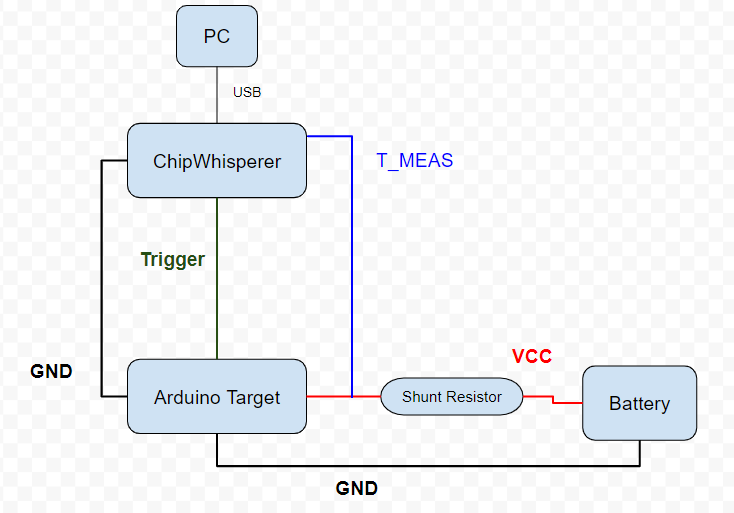Hello,
I have a CW Nano, and after playing around with the embedded target it has I wanted to try to perform the same attacks on a custom target. To do so, I have de-soldered both SJ5 and SJ6 jumpers as I learned from the datasheet:

And now I wish to measure the power consumption on my target dummy Arduino board.
This is how I thought I want to put everything together:
I was trying to make it as similar as it can be to the configuration I saw on the datasheet on the embedded target where T_MEAS is placed between the resistor and the target’s VDD.
From what I learned on the theory of doing CPA/DPA/ Any simple power analysis, I thought you’re suppose to measure to power consumption across the resistor. But in this configuration, and also the one in the ChipWhisperer’s target - the measurement is performed across the target itself (between T_MEAS and GND) from what I was able to understand
Is this the right way to do it? Wouldn’t that make my measurement more noisy? Especially when talking about a custom target (now that’s an Arduino, but I will probably test it on other targets)
Thanks in advance
